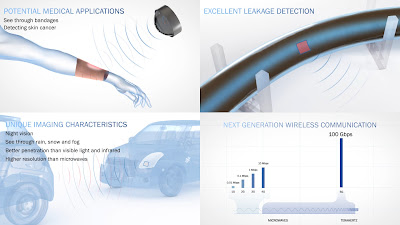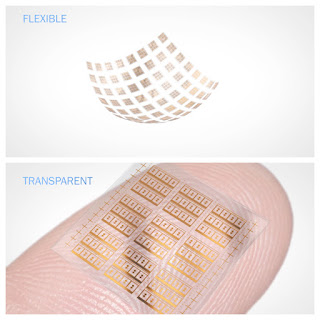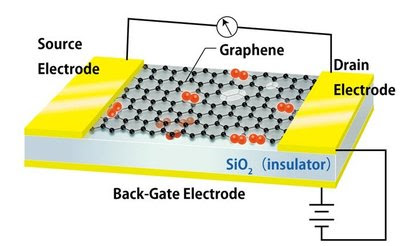Electronics, till date, deal only with the frequency ranges
of gigahertz. Most significantly, the radiations of gigahertz range are used in
communication devices – cellular phones, Wi-Fi signals etc. But five years ago,
scientists have devised photodetectors capable of detecting the frequencies of
visible and near-infrared ranges. With the combination of Graphene and quantum
dots, the scientists were able to create flexible photodetectors. However,
these photodetectors are not capable of working in the terahertz frequency
range.
Applications of Terahertz photodetectors:
Gigahertz radiations are normally blocked by certain
materials. The major advantage of terahertz radiation over gigahertz radiation
is that they “penetrate” through the materials, which can block the gigahertz
radiation to pass through them. With the
recent researches, scientists have created the photodetectors capable of working
in the terahertz range. The immediate application of these photodetectors of terahertz
range can be found in medical diagnostics and intelligent vehicles.
 |
| Applications of Terahertz Graphene photodetector |
Getting into details, a team of researchers at from Chalmers
University, Sweden has been working on the graphene materials to create
flexible photodetectors, that operate and sustain in the terahertz range and
they have succeeded! This team of researchers has recently published a journal
in Applied Physics Letter.
 |
| Graphene photodetector |
Transistor structure:
Field Effect Transistors (FETs) are normally built either up
on a p-type or n-type substrate and a complementary channel region. The journal
published by the research team is about the FET built up on a plastic
substrate, with a graphene material forming the channel. The team claims that
this is the base of achieving the detection of 330 – 500 GHz ranges of frequencies.
Terahertz graphene-based FET detectors have been demonstrated on rigid substrates such as SiO2/Silicon. And flexible devices (graphene and other concepts) have been demonstrated at RF/microwave frequencies. - Jan Stake, head of the Terahertz and Millimetre Wave Laboratory at Chalmers.
This research makes it possible to create an environment of
Internet of Things via high-bandwidth 5G technologies. Apparently, this is the transition
phase of electronics from gigahertz (109 Hz) range to terahertz (1012
Hz) range.












0 comments:
Post a Comment